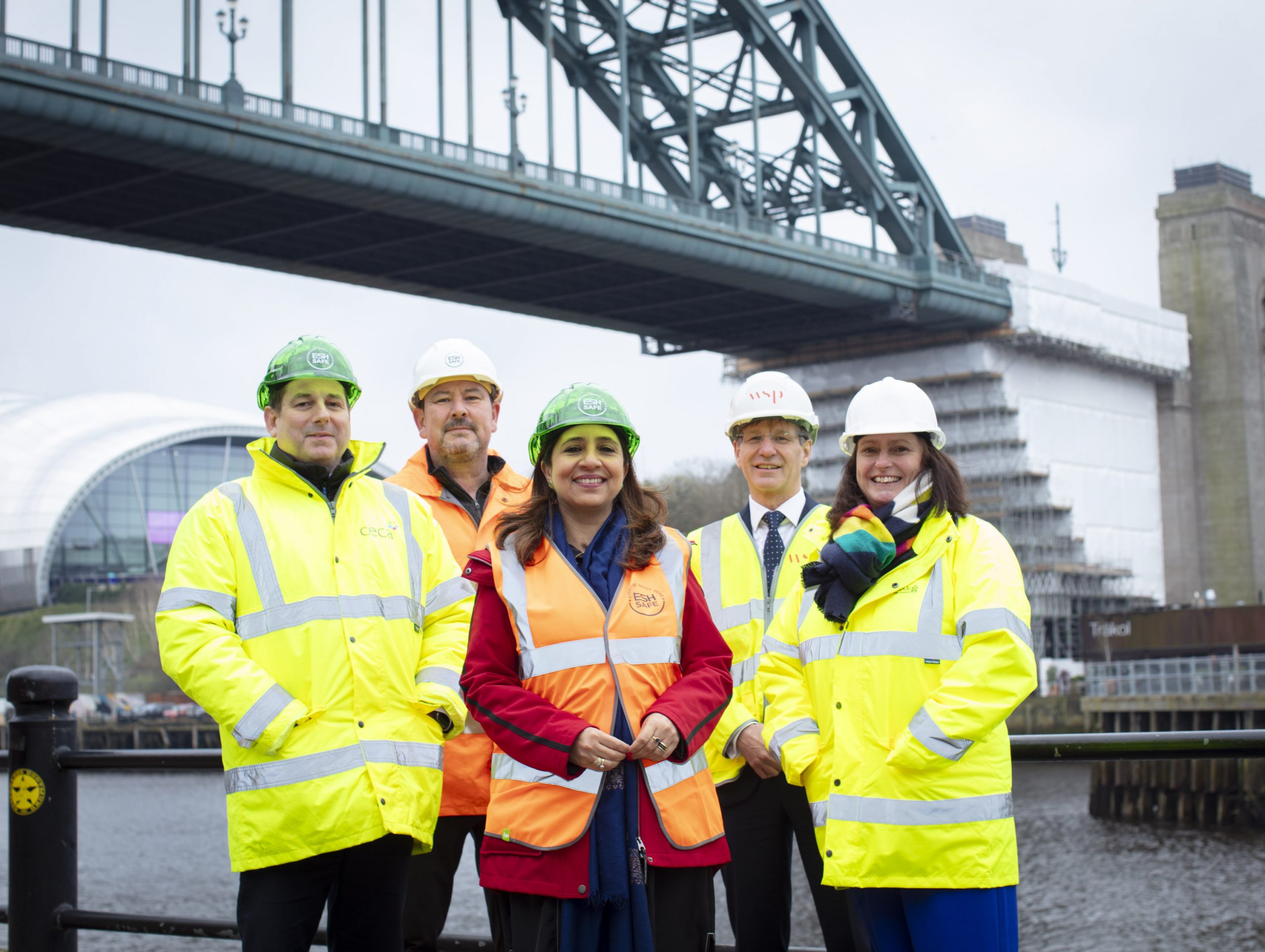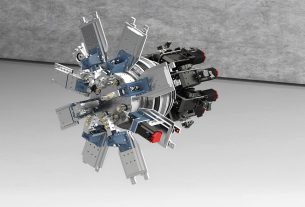ICE President Professor Anusha Shah met the team behind the project during a visit to the North East.
Key representatives responsible for the delivery of a major restoration programme on the Tyne Bridge welcomed the Institution of Civil Engineers (ICE) President, Anusha Shah, for a project tour on March 8.
Ahead of work on the main bridge deck commencing in April, representatives from Esh Construction, Newcastle City Council and WSP talked Professor Shah, and the ICE President’s Future Leader, Ramsha Saleem, through the finer details of the widely anticipated restoration. Civil Engineering Contractors Association (CECA) Chairperson, Ross Markwell, and Director, Stuart Miller, also joined the visit.
Thorough investigations have outlined that more than 900 repairs need to be carried out to preserve the landmark for future generations, this involves steel, concrete, stonework and masonry repairs, drainage improvements, bridge deck waterproofing, resurfacing, parapet protection and bridge joint replacement.
Scaffolding wrapped with a protective sheeting to protect the public will be installed to allow repairs and surface blasting to be undertaken before the bridge can be painted.
To deliver the repairs and strengthening safely, the scaffold will be installed over approximately 20 phases to maintain the integrity of the structure’s load capacity, while keeping the road and footpaths open to traffic and pedestrians throughout the project. These loading constraints result in the programme to complete the restoration being across four years.
Esh Construction’s Divisional Director, Steven Garrigan, said: “Contrary to wider perceptions, this project is far more than just a ‘lick of paint’. The condition of the existing structure requires the design of some complex temporary works in order to provide scaffolding to access the repairs and strengthening works which are essential to futureproof the bridge for the next 100 years and more.
“As a local contractor, we are proud to be restoring a regional icon and it was a pleasure to welcome Professor Shah and CECA to see the progress to date.”
Initial works got underway on the Gateshead quayside in September last year, following the departure of the kittiwakes. The 159th ICE President heard how the first project milestone has recently been reached, with the installation and encapsulation of the first phase of scaffold complete.
In recognition of Professor Shah’s ‘Nature and People Positive’ theme for her presidential year – a campaign for civil engineering projects to be delivered in harmony with nature – the team outlined the key environmental factors that are being considered throughout the project.
The entire construction programme has taken into account the mitigations required for the farthest inland kittiwake colony which chooses the Tyne Bridge as a nesting location from February to August. To account for reduced nesting provision in certain sections of the bridge, two nesting ledges, dubbed ‘kittiwake hotels’ have been specially built on the Gateshead towers.
Professor Anusha Shah, 159th President of the ICE, said: “It was an honour to visit and learn about the upcoming major refurbishment programme of the iconic Tyne Bridge, an instantly recognisable symbol of the North East and a structure the region is so rightly proud of. These important works are a perfect example of the undeniable interrelationship between infrastructure and nature, given the careful consideration and management of the kittiwake colony.
“The passion and the enthusiasm of the project team for the task at hand shines through, as well as the pride they each have towards the Tyne Bridge, and I wish them the best of luck in restoring this regional icon for generations to come. Thanks to Esh Construction, and the wider project team, for taking the time to take me through the finer details of this much anticipated project.”
Pamela Holmes, Assistant Director for Transport at Newcastle City Council said: “We’re delighted to host this visit and showcase our much-loved Tyne Bridge and the vital plans we have in place to see it returned to its former glory.
“The Tyne Bridge is the defining symbol of the North East, as well as a major gateway to the city, and we’re all incredibly proud to be part of the team restoring this iconic structure and preserving it for future generations.”
Stuart Miller, Director of CECA in the North East , commented: “Restoring the Tyne Bridge is an exciting project that will put a spotlight on civil engineering within region. The continued investment in infrastructure in the North East serves to boost economic growth – supporting contractors and the local supply chain. This scheme will return a symbolic Grade II listed structure back to its former glory, and in doing so, will provide investment through procurement for local businesses and jobs for local people. Esh Construction is well known for its commitment to delivering award-winning social value, and I look forward to seeing what opportunities this will generate throughout the programme.”
The Tyne Bridge restoration is funded by the UK Government, as well as monies from both Newcastle City Council and Gateshead Council. The Government signed off £35.2 million on 2 February 2024 towards the cost of two projects: the restoration of the Tyne Bridge and the Central Motorway upgrade. The council still await confirmation of the remaining £6 million which was announced as part of the Network North plan in October.
Significant disruption is expected when the traffic is reduced to one lane in each direction in April and people are being urged to plan ahead, utilising public transport where possible. More information on travel advice and journey planning can be found at https://tynebridge.org/travel-adviceTo find out more about Esh Group, visit www.eshgroup.co.uk




